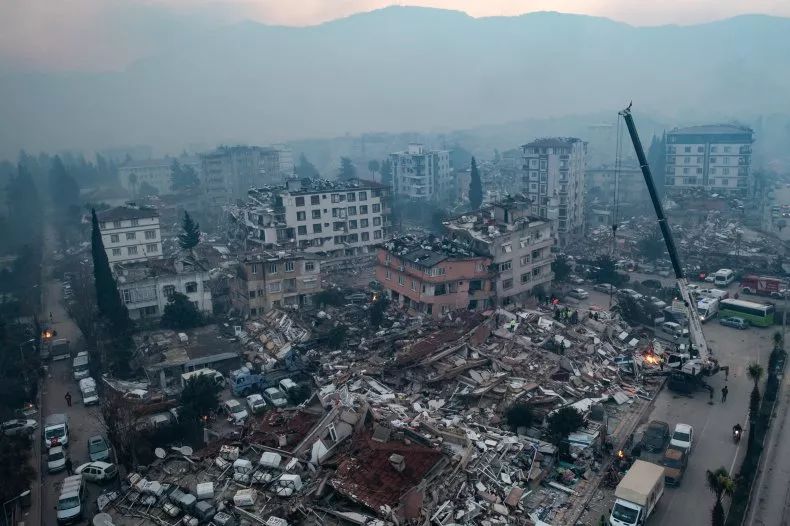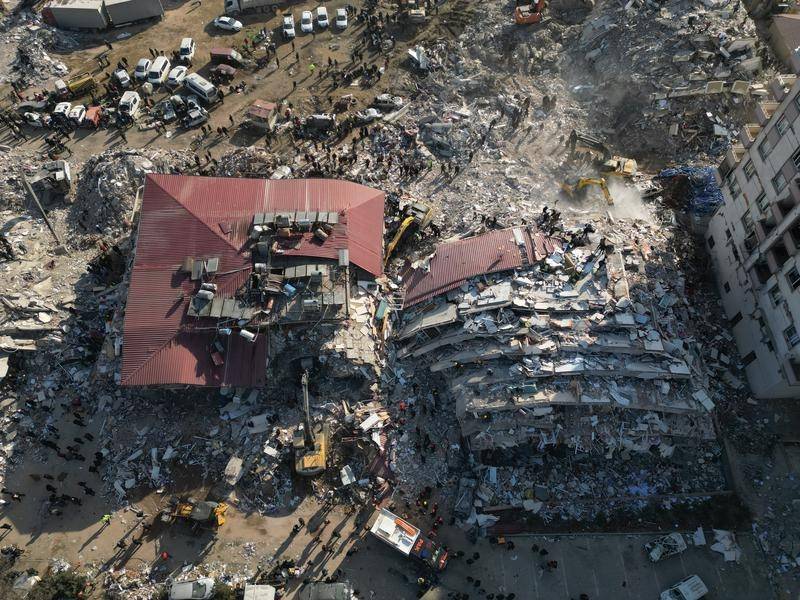- Home
- Magazines
-
Newsletters
- 19 July 2024
- 12 July 2024
- 5 July 2024
- 28 June 2024
- 14 June 2024
- 7 June 2024
- 31 May 2024
- 24 May 2024
- 17 May 2024
- 10 May 2024
- 3 May 2024
- 26 April 2024
- 19 April 2024
- 12 April 2024
- 22 March 2024
- 15 March 2024
- 8 March 2024
- 1 March 2024
- 23 February 2024
- 16 February 2024
- 9 February 2024
- 26 January 2024
- 19 January 2024
- 12 January 2024
- 22 December 2023
- 1 December 2023
- 24 November 2023
- 10 November 2023
- 3 November 2023
- 27 October 2023
- 20 October 2023
- 13 October 2023
- 6 October 2023
- 29 September 2023
- 22 September 2023
- 15 September 2023
- 8 September 2023
- 25 August 2023
- 18 August 2023
- 11 August 2023
- 4 August 2023
- 28 July 2023
- 21 July 2023
- 14 July 2023
- 7 July 2023
- 30 June 2023
- 23 June 2023
- 15 June 2023
- 2 June 2023
- 26 May 2023
- 19 May 2023
- 12 May 2023
- 5 May 2023
- 28 April 2023
- 21 April 2023
- 14 April 2023
- 6 April 2023
- 31 March 2023
- 24 March 2023
- 17 March 2023
- 10 March 2023
- 3 March 2023
- 24 February 2023
- 17 February 2023
- 10 February 2023
- 3 February 2023
- 27 January 2023
- 13 January 2023
- 22 December 2022
- 15 December 2022
- 9 December 2022
- 2 December 2022
- 25 November 2022
- 18 November 2022
- 11 November 2022
- 4 November 2022
- Advertising
- Subscribe
- Articles
-
Galleries
- AOSH Firexpo 2024
- Midvaal Fit to Fight Fire 2024
- WoF KNP 2023 Gallery
- TFA 2023 Gallery
- DMISA Conference 2023
- ETS 2023 Gallery
- Drager Fire Combat and Rescue Challenge 2023
- AOSH Firexpo 2023
- Midvaal Fit to Fight Fire
- WC IFFD 2023
- NMU 13th Fire Management Symposium 2022
- JOIFF Africa Conference 2022
- ETS 2022 Gallery
- TFA 2022 Gallery
- IFFD 2018
- SAESI
- TFA
- WRC 2018
- WRC 2019
- A-OSH/Securex
- IFE AGM 2019
- ETS Ind Fire Comp Nov 2019
- ETS Challenge 2021
- Drager launch
- Drager Fire Combat and Rescue Challenge 2022
- TFA
- Contact
- Home
- Magazines
-
Newsletters
- 19 July 2024
- 12 July 2024
- 5 July 2024
- 28 June 2024
- 14 June 2024
- 7 June 2024
- 31 May 2024
- 24 May 2024
- 17 May 2024
- 10 May 2024
- 3 May 2024
- 26 April 2024
- 19 April 2024
- 12 April 2024
- 22 March 2024
- 15 March 2024
- 8 March 2024
- 1 March 2024
- 23 February 2024
- 16 February 2024
- 9 February 2024
- 26 January 2024
- 19 January 2024
- 12 January 2024
- 22 December 2023
- 1 December 2023
- 24 November 2023
- 10 November 2023
- 3 November 2023
- 27 October 2023
- 20 October 2023
- 13 October 2023
- 6 October 2023
- 29 September 2023
- 22 September 2023
- 15 September 2023
- 8 September 2023
- 25 August 2023
- 18 August 2023
- 11 August 2023
- 4 August 2023
- 28 July 2023
- 21 July 2023
- 14 July 2023
- 7 July 2023
- 30 June 2023
- 23 June 2023
- 15 June 2023
- 2 June 2023
- 26 May 2023
- 19 May 2023
- 12 May 2023
- 5 May 2023
- 28 April 2023
- 21 April 2023
- 14 April 2023
- 6 April 2023
- 31 March 2023
- 24 March 2023
- 17 March 2023
- 10 March 2023
- 3 March 2023
- 24 February 2023
- 17 February 2023
- 10 February 2023
- 3 February 2023
- 27 January 2023
- 13 January 2023
- 22 December 2022
- 15 December 2022
- 9 December 2022
- 2 December 2022
- 25 November 2022
- 18 November 2022
- 11 November 2022
- 4 November 2022
- Advertising
- Subscribe
- Articles
-
Galleries
- AOSH Firexpo 2024
- Midvaal Fit to Fight Fire 2024
- WoF KNP 2023 Gallery
- TFA 2023 Gallery
- DMISA Conference 2023
- ETS 2023 Gallery
- Drager Fire Combat and Rescue Challenge 2023
- AOSH Firexpo 2023
- Midvaal Fit to Fight Fire
- WC IFFD 2023
- NMU 13th Fire Management Symposium 2022
- JOIFF Africa Conference 2022
- ETS 2022 Gallery
- TFA 2022 Gallery
- IFFD 2018
- SAESI
- TFA
- WRC 2018
- WRC 2019
- A-OSH/Securex
- IFE AGM 2019
- ETS Ind Fire Comp Nov 2019
- ETS Challenge 2021
- Drager launch
- Drager Fire Combat and Rescue Challenge 2022
- TFA
- Contact
|
10 February 2023
|
Turkish Earthquake could have been building for thousands of years
The earthquake that devastated large areas of southern Turkey and northern Syria may have been building for thousands of years. The 7,8-magnitude earthquake shook the region at 4h17am local time on 6 February 2023. Its epicentre was in the Turkish city of Gaziantep but it was felt by people living across the wider area, including neighbouring countries like Syria, Israel and Lebanon. The death toll has been rising for and has now surpassed 35 000.
Turkey is one of the most seismically active countries in the world, so earthquakes are not a surprise. The country is located between two major tectonic plates that effectively squeeze Turkey out sideways.
This particular earthquake was caused by the East Anatolian Fault line, which has only caused a handful of earthquakes previously. This makes this event exceedingly rare for the region. The last earthquake that occurred in this region happened on 24 January 2020, in Elazığ, at a magnitude of 6,7. This earthquake killed 41 people and injured over 1 600.
The East Anatolian Fault spreads 434 miles through southeast Turkey. It extends from a junction on the North Anatolian Fault line, which is longer at 932 miles and spreads throughout the north of the country into the Aegean Sea. The North Anatolian Fault causes the most earthquakes in the country and is often compared to the infamous San Andreas Fault in California.
Scientists believe that three previous earthquakes in particular, which occurred in the East Anatolian region in 1513, 1872 and 1893, may have built up the stresses on the fault line, which eventually lead to this catastrophic quake.
A 2013 study by Duman and Emre, published by Geological Society London Special Publications, highlighted segments of the fault that they believed had ruptured in the past, with the earthquakes of 1513, 1872 and 1893.
Ruptures occur when strong earthquakes move the fault deep within the earth, causing it to break through the surface. Not all earthquakes cause ruptures.
If Duman and Emre's study is correct, it shows that this recent 7,8 earthquake included all the segments of the fault that ruptured in 1513, 1872 and 1893.
In theory, this 7.8 earthquake could have been building up following these earthquakes.
Caroline M Eakin, a fellow and senior lecturer at the Research School of Earth Sciences at Australian National University, said, "The stress on a fault and likelihood to rupture is difficult to know. I am sure we will understand much more about this earthquake with time. One thing we can consider, however, is the history of large earthquakes previously along the East Anatolian Fault. In basic terms, sections of the fault that last ruptured a long time ago, have had time to build up stress and are in theory most due to rupture again. However, the intervals between large magnitude earthquakes are not regular, it could be 100 years for one earthquake cycle and then 1 000 years for the next. It seems the last time this section of the East Anatolian Fault had a M7+ earthquake was 130 years ago."
Another 2020 study from the Seismological Research Letter said that the previous earthquake in 2020, "only ruptured part of the locked zone", a zone that is not slipping.
Because of this, scientists suspected there could be an increase in the seismic activity in the East Anatolian fault zone in the period following.
Tectonic plates are constantly moving very slowly but they also remain relatively static when they get stuck at their edges. This can cause pressures between the two plates to build up over time. An earthquake will occur when the fault suddenly slips or moves as a result of this pressure.
Seismologists know that the plates are stressed and building up pressures all the time. This means earthquakes are inevitable but it is nearly impossible to predict when and where they will occur.
Caroline Beghein, an associate professor at the UCLA Department of Earth, Planetary and Space Sciences, said, "While scientists cannot predict exactly where and when a quake will happen or how large it will be, we knew the East Anatolian Fault (EAF) was an active fault because it ruptured previous times in the 19th Century and more recently with a magnitude 6,7 in 2020.
"A fault is considered active if it shows evidence of having moved at least once in the past 10 000 years. So, it can be active at geological timescales but not have had quakes in recent recorded history. A few hundred years may seem like a long time to humans but on geological timescales, it is relatively recent. What is striking is that the main shock that just occurred was large, larger than these historical quakes. This may be partly explained by the fact that it ruptured over a much longer segment than previous quakes as more energy gets released when the fault ruptures over larger distances."
While this particularly earthquake was difficult to precinct, seismologists can guess what may follow.
There are likely to be more earthquakes, in the form of aftershocks, rippling out across the country. Aftershocks occur close by to where the original earthquake took place and are due to the fault readjusting itself after the sudden slip.
Chris Elders, plate tectonics and structural geology expert adjunct professor from the School of Earth and Planetary Life Sciences at Australia's Curtin University, said, "We know there have been a large number of very significant or relatively large aftershocks been so far in excess of the 20 or 25 earthquakes, still happening. Most of these are magnitude four magnitude five, which is fairly substantial. And what's interesting is often aftershocks occur in a relatively small area. But in this case, they were occurring all the way along the east Anatolian fault to a distance of 155 miles. So we are seeing a lot of earthquake activity in the area. And as is often the case with a large earthquakes that aftershocks can continue for a period of weeks, sometimes even months."
Source: Newsweek, Sky News
Turkey is one of the most seismically active countries in the world, so earthquakes are not a surprise. The country is located between two major tectonic plates that effectively squeeze Turkey out sideways.
This particular earthquake was caused by the East Anatolian Fault line, which has only caused a handful of earthquakes previously. This makes this event exceedingly rare for the region. The last earthquake that occurred in this region happened on 24 January 2020, in Elazığ, at a magnitude of 6,7. This earthquake killed 41 people and injured over 1 600.
The East Anatolian Fault spreads 434 miles through southeast Turkey. It extends from a junction on the North Anatolian Fault line, which is longer at 932 miles and spreads throughout the north of the country into the Aegean Sea. The North Anatolian Fault causes the most earthquakes in the country and is often compared to the infamous San Andreas Fault in California.
Scientists believe that three previous earthquakes in particular, which occurred in the East Anatolian region in 1513, 1872 and 1893, may have built up the stresses on the fault line, which eventually lead to this catastrophic quake.
A 2013 study by Duman and Emre, published by Geological Society London Special Publications, highlighted segments of the fault that they believed had ruptured in the past, with the earthquakes of 1513, 1872 and 1893.
Ruptures occur when strong earthquakes move the fault deep within the earth, causing it to break through the surface. Not all earthquakes cause ruptures.
If Duman and Emre's study is correct, it shows that this recent 7,8 earthquake included all the segments of the fault that ruptured in 1513, 1872 and 1893.
In theory, this 7.8 earthquake could have been building up following these earthquakes.
Caroline M Eakin, a fellow and senior lecturer at the Research School of Earth Sciences at Australian National University, said, "The stress on a fault and likelihood to rupture is difficult to know. I am sure we will understand much more about this earthquake with time. One thing we can consider, however, is the history of large earthquakes previously along the East Anatolian Fault. In basic terms, sections of the fault that last ruptured a long time ago, have had time to build up stress and are in theory most due to rupture again. However, the intervals between large magnitude earthquakes are not regular, it could be 100 years for one earthquake cycle and then 1 000 years for the next. It seems the last time this section of the East Anatolian Fault had a M7+ earthquake was 130 years ago."
Another 2020 study from the Seismological Research Letter said that the previous earthquake in 2020, "only ruptured part of the locked zone", a zone that is not slipping.
Because of this, scientists suspected there could be an increase in the seismic activity in the East Anatolian fault zone in the period following.
Tectonic plates are constantly moving very slowly but they also remain relatively static when they get stuck at their edges. This can cause pressures between the two plates to build up over time. An earthquake will occur when the fault suddenly slips or moves as a result of this pressure.
Seismologists know that the plates are stressed and building up pressures all the time. This means earthquakes are inevitable but it is nearly impossible to predict when and where they will occur.
Caroline Beghein, an associate professor at the UCLA Department of Earth, Planetary and Space Sciences, said, "While scientists cannot predict exactly where and when a quake will happen or how large it will be, we knew the East Anatolian Fault (EAF) was an active fault because it ruptured previous times in the 19th Century and more recently with a magnitude 6,7 in 2020.
"A fault is considered active if it shows evidence of having moved at least once in the past 10 000 years. So, it can be active at geological timescales but not have had quakes in recent recorded history. A few hundred years may seem like a long time to humans but on geological timescales, it is relatively recent. What is striking is that the main shock that just occurred was large, larger than these historical quakes. This may be partly explained by the fact that it ruptured over a much longer segment than previous quakes as more energy gets released when the fault ruptures over larger distances."
While this particularly earthquake was difficult to precinct, seismologists can guess what may follow.
There are likely to be more earthquakes, in the form of aftershocks, rippling out across the country. Aftershocks occur close by to where the original earthquake took place and are due to the fault readjusting itself after the sudden slip.
Chris Elders, plate tectonics and structural geology expert adjunct professor from the School of Earth and Planetary Life Sciences at Australia's Curtin University, said, "We know there have been a large number of very significant or relatively large aftershocks been so far in excess of the 20 or 25 earthquakes, still happening. Most of these are magnitude four magnitude five, which is fairly substantial. And what's interesting is often aftershocks occur in a relatively small area. But in this case, they were occurring all the way along the east Anatolian fault to a distance of 155 miles. So we are seeing a lot of earthquake activity in the area. And as is often the case with a large earthquakes that aftershocks can continue for a period of weeks, sometimes even months."
Source: Newsweek, Sky News
Quick navigation
Social
|
Who are we?FRI Media (Pty) Ltd is an independent publisher of technical magazines including the well-read and respected Fire and Rescue International, its weekly FRI Newsletter and the Disaster Management Journal. We also offer a complete marketing and publishing package, which include design, printing and corporate wear and gifts. |
Weekly FRI Newsletter |
© Copyright 2018 Fire and Rescue International. All Rights Reserved.






